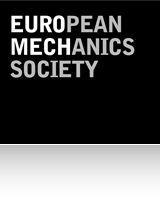604 – Fluid and solid mechanics for tissue engineering
Date:
23 September 2019 – 25 September 2019
Location:
Mathematical Institute, University of Oxford
Website:
Chairperson:
Prof. Sarah Waters
Mathematical Institute
University of Oxford
Radcliffe Observatory Quarter
Oxford, OX2 6GG
UK
Email: waters@maths.ox.ac.uk
Co-chairperson
Prof. Liesbet Geris
Biomechanics Research Unit
University of Liege
Chemin des Chevreuils 1 – BAT 52/3
4000 Liège 1
Belgium
In vitro tissue engineering (TE) aims to create functional tissue and organ samples external to the body to replace damaged or diseased tissues and organs. By using cells (e.g. autologous or allogenic) in combination with natural or synthetic biomaterial scaffolds and biochemical factors, tissue-engineered products have many advantages over traditional approaches such as donor tissue and organ transplantation that can elicit an adverse immune response. The development of the growing tissue construct, the combination of scaffold, cells, extracellular matrix (ECM) and biochemical factors, often occurs within a bioreactor that enables precise control of the bio-mechano-chemical environment experienced by the cells within the growing construct. This is particularly important in the development of mechanosensitive tissues, such as bone. Successfully engineering tissues in vitro has required the development of new smart biomaterials, new tissue growth strategies involving defined biological cues, and novel and bespoke bioreactor environments for growing tissue under physiological mechanical conditions. To date, only simple avascular tissues have been successfully generated to a standard where they can be used in a clinical setting, and research into methods for improving tissue viability is essential.
In TE systems, fluid mechanics is used to provide mechanical load (e.g. via fluid shear) to mechanosensitive tissues in vivo such as bone and vasculature, and a key challenge is to recreate the mechanical environment within the bioreactor system that is unique to the tissue under consideration. The fluid flows are intricate, requiring an understanding of novel fluid-structure interactions between the fluid flows, the cells and their ECM, and the (often deformable) biomaterial. Furthermore, successful tissue growth in bioreactor systems relies on appropriate solute delivery to and waste-product removal from the cells in the tissue construct. To promote transport (without recourse to agitation methods that can be damaging to cells in a tissue-engineering setting), fluid flows are exploited to enhance transport by advection.
In this colloquium, we will present state-of-the-art theoretical and experimental fluid mechanics for TE, and explore the transformative potential of combined quantitative theoretical and experimental fluid mechanics approaches to inform in vitro TE protocols, providing information that cannot be obtained from complex in vitro TE systems alone. By designing fluid dynamics experiments to capture key features of the TE system, detailed quantitative experimental data may be obtained as system parameters are varied. These can be compared to solutions of the governing equations to validate the mathematical models. The hybrid approach of combining the resulting insights from the validated theoretical models with in vitro TE experiments can then be used to inform bioreactor and smart biomaterial design for TE strategies, with the aim of improving tissue viability. Delegates will be drawn from the theoretical and experimental fluid mechanics communities. To ensure the focus remains applicable to the TE challenges, we will invite leading figures from the TE community, which will also facilitate new opportunities for interdisciplinary collaboration.
